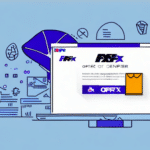Introduction to FedEx Ship Manager
If your business involves shipping multiple packages, you’re likely familiar with FedEx Ship Manager. This comprehensive web-based tool allows businesses to efficiently manage their shipping needs online. One standout feature is batch importing, which enables you to upload up to 1,000 shipping records at once, significantly reducing time and effort.
Key Features of FedEx Ship Manager
Batch Importing
Batch importing allows businesses to streamline their shipping process by uploading multiple shipping records simultaneously. This feature is ideal for companies handling large volumes of shipments, ensuring consistency and accuracy across all labels.
Scheduling Pickups
FedEx Ship Manager offers the convenience of scheduling pickups directly from your office or warehouse. This eliminates the need to visit a FedEx location, saving valuable time and ensuring your packages are collected promptly.
Shipment Tracking
With real-time tracking, businesses can monitor the status of their shipments from dispatch to delivery. This feature provides transparency and allows you to keep your customers informed, enhancing overall customer service.
Benefits of Batch Importing for Businesses
Time Savings
Batch importing significantly reduces the time spent on creating individual shipping labels. By uploading multiple records at once, businesses can process a large number of shipments in a fraction of the time.
Accuracy and Consistency
Automating the label creation process minimizes the risk of human error. Batch importing ensures that all shipping labels are generated consistently, maintaining high accuracy across all shipments.
Streamlined Shipping Processes
Batch importing integrates seamlessly with your existing systems, allowing for efficient management of shipping records. This streamlined approach improves overall operational efficiency and productivity.
Setting Up Batch Importing in FedEx Ship Manager
Requirements
Before utilizing the batch importing feature, ensure you have the following:
- A FedEx account with an active account number.
- FedEx Ship Manager User ID and Password.
- Your shipment data formatted correctly in CSV, TXT, or XML files.
Step-by-Step Guide
- Log in to FedEx Ship Manager using your User ID and Password.
- Select "Prepare Shipment" from the main menu.
- Click on "Batch File Shipping".
- Upload your shipment data file in the required format.
- Review the uploaded data for accuracy.
- Click "Ship" to initiate the shipments.
- Print your shipping labels and invoices.
Implementing batch importing can lead to significant time and cost savings, especially for businesses with high shipping volumes.
Preparing Your Shipment Data for Batch Importing
Data Formatting
Your shipment data must be formatted correctly to ensure a smooth import process. FedEx Ship Manager supports CSV, TXT, and XML file formats. Each column in your CSV file should correspond to specific data fields such as recipient name, address, package weight, and shipping service.
Best Practices
- Consistent Data Entry: Ensure all data entries are consistent to avoid errors during import.
- Validate Addresses: Use address validation tools to confirm the accuracy of recipient addresses.
- Test with Sample Data: Before uploading large batches, test the import process with a small sample to identify and rectify any issues.
Troubleshooting Common Batch Importing Issues
- Data Formatting Errors: Ensure your file is saved in CSV, TXT, or XML format with correct column mappings.
- Shipping Service Unavailable: Verify that the selected shipping service is available for the recipient’s location.
- Payment Method Errors: Double-check that your payment method and account number are entered correctly.
If you encounter address validation errors, confirm that all address details, including zip codes and apartment numbers, are accurate. Utilizing FedEx’s address validation tool can help prevent these issues.
Customizing Shipping Labels and Invoices
Shipping Labels
FedEx Ship Manager allows you to customize your shipping labels to include your company logo and branding. You can choose from various label formats and sizes, and add fields such as reference numbers or special handling instructions to meet your specific needs.
Invoices
Invoices can be tailored to include your company’s address, contact information, and any special terms or conditions. You can opt to display a summary of charges or provide a detailed breakdown, enhancing the professionalism and clarity of your billing process.
Integrating FedEx Ship Manager with Your E-commerce Platform
For e-commerce businesses, integrating FedEx Ship Manager with your platform can automate the transfer of shipment data, further streamlining your operations. This integration enables real-time tracking and delivery notifications, improving customer satisfaction and loyalty. Additionally, businesses can take advantage of discounted shipping rates and exclusive FedEx benefits.
Check with your e-commerce platform provider to ensure compatibility and explore available integration options.
Maximizing the Benefits of FedEx Ship Manager's Batch Importing Feature
Efficient Data Management
Proper preparation and accurate data entry are crucial for maximizing the benefits of batch importing. Regularly saving commonly used templates can expedite future shipments and maintain consistency.
Enhanced Tracking and Management
Using batch importing to handle multiple shipments simultaneously allows for better tracking and management. Centralizing shipment data makes it easier to monitor delivery statuses and quickly address any issues that arise.
For advanced users, leveraging FedEx Ship Manager’s reporting capabilities can provide valuable insights into shipping trends and areas for process improvement.
Best Practices for Using FedEx Ship Manager
- Group shipments into similar categories to streamline the process.
- Utilize templates for frequently shipped items to save time.
- Regularly verify shipment data to ensure accuracy.
- Customize labels and invoices to reinforce your brand identity.
- Leverage FedEx’s reporting tools to analyze and optimize your shipping strategy.
By adhering to these best practices, businesses can enhance the efficiency and effectiveness of their shipping operations using FedEx Ship Manager.
Continuously reviewing and optimizing your shipping processes can lead to reduced costs, improved delivery times, and higher customer satisfaction, ultimately contributing to the growth and success of your business.




















